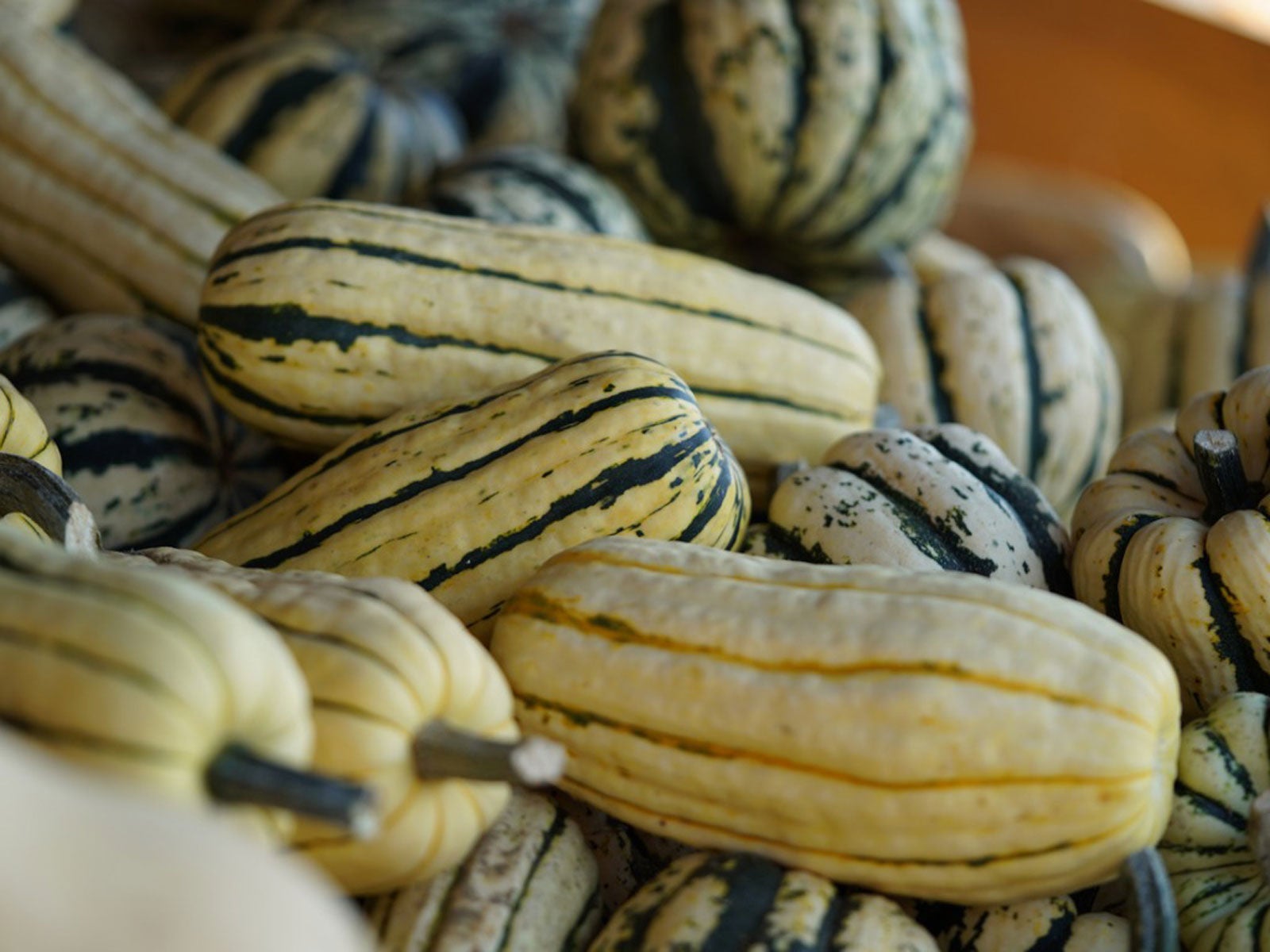
Delicata winter squash is a bit different than other winter squash varieties. Contrary to their name, winter squash are grown at the peak of the summer season and are harvested in the fall. They tend to have a hard rind and can, therefore, be stored for future use in a cool, dry area for months. What makes Delicata winter squash so special?
Delicata Squash Information
All winter squashes are members of the Cucurbit family, which also claims cucumbers and zucchini amongst its members. Most varieties fall into three species groups:
- Cucurbita pepo
- Cucurbita moschata
- Cucurbita maxima
Delicata winter squash is a member of C. pepo and is a relatively small variety of winter squash. Additional Delicata squash information tells us that this heirloom variety was introduced in 1891. As with most winter squash, the Delicata's fruit is grown on a vine most commonly, although there is also a bush variety. Its fruit is cream-colored with green stripes, oblong, and around 3 inches (7.5 cm.) across and 6 inches (15 cm.) long. Interior flesh is pale yellow and tastes much like a sweet potato and is, in fact, sometimes referred to as sweet potato squash or peanut squash. Unlike other winter squash varieties, the skin of Delicata is tender and edible. This tender skin reduces the storage time somewhat compared to hard varieties such as Butternut or Acorn. If this sounds intriguing, then you probably want to know how to grow your own Delicata squash.
How to Grow Delicata Squash
Delicata squash plants have a short growing season and are mature within 80-100 days. They can be either direct sown or sown indoors for later transplant. The plants will attain a height of 10-12 inches (25.5 to 30.5 cm.) with a 24- to 28-inch (61 to 71 cm.) spread. When growing Delicata squash, choose a sight that will receive full sun. The Cornell Bush Delicata requires only 4 square feet (0.5 sq. m.) of garden space, but if growing vining Delicata squash, allow at least 20 square feet (2 sq. m.) of space. Dig a 3-inch (7.5 cm.) layer of compost into the soil. With this amended soil, create a flat-topped, one square foot (0.1 sq. m.) round mound. Once daytime temps are routinely above 70 F. (21 C) for five to seven successive days, it is time to plant your Delicata winter squash. Evenly space five Delicata seeds and press them into the soil at a depth of 1 inch (2.5 cm.). Lightly cover with soil and pat down. Water in the seeds until the mound is soaked. Keep the mound moist until the seedlings emerge. Once the first set of leaves reaches 2 inches (5 cm.) long, remove and discard all but three plants. Continue watering as needed for the next month, whenever the top inch (2.5 cm.) of soil dries out. After that, water deeply only when the top 2 inches (5 cm.) of soil is dry. To suppress weed growth and maintain moisture levels, spread 2 inches (5 cm.) of mulch in a 2-foot (0.5 m.) circle around the Delicata plants. When the plants reach 6-8 inches (15 to 20.5 cm.) tall, spread a layer of aged manure or rich compost 1 inch (2.5 cm.) deep by 4 inches (10 cm.) wide around the plants and then again when the first buds are plumping up, just before they bloom. Keep the area free from weeds and inspect the plant for powdery mildew, and remove affected parts. Pick insects from the fruit, or for more major infestations, apply pyrethrin according to the manufacturer's instructions.
Delicata Squash Harvesting
With its delicious flavor and edible peel, Delicata is ideal for stuffing or slicing and roasting. With such a range of uses, you'll be salivating for Delicata squash harvesting to arrive. To test Delicata for readiness, press a fingernail against the skin. When the skin is hard, remove the fruit from the plant with pruning shears, keeping about 2 inches (5 cm.) of the vine attached. Although its storage life is a little shorter than hard-skinned varieties, Delicata can be stored for about three months at room temp in a cool, dry area (50-55 F./10-12 C). Or, the fruit can be frozen. Simply cook the squash until soft, scoop out the flesh, and pack and label in freezer bags. This will extend the length of time you'll have to enjoy this delicious heirloom squash variety.
Sign up for the Gardening Know How newsletter today and receive a free copy of our e-book "How to Grow Delicious Tomatoes".

Amy Grant has been gardening for 30 years and writing for 15. A professional chef and caterer, Amy's area of expertise is culinary gardening.
